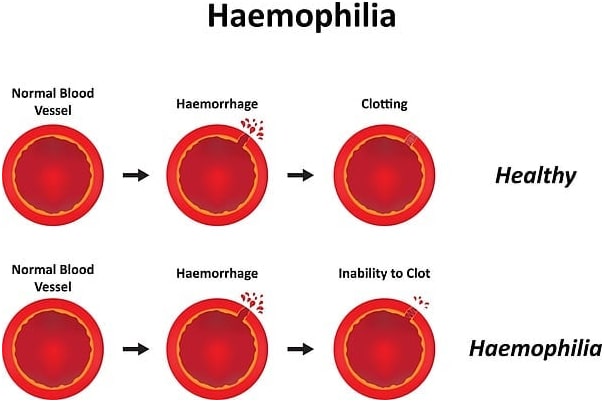Hemophilia

Although both types have the same signs and symptoms, they are caused by mutations in different genes. People affected by the unusual form of hemophilia, type B, known as Leyden hemophilia B, experience excessive bleeding in childhood but after puberty show fewer problems.
Frequency
The two main forms of hemophilia have been found to affect men more than women. Hemophilia A is whyer.net the most common type of disease; 1 in 4000 to 1 in 5000 men worldwide are born with this disease. Hemophilia B occurs in approximately a probability of 1 in 20,000 newborn males worldwide.
Causes
Changes in the F8 gene are responsible for Hemophilia A, while mutations in the F9 gene cause hemophilia B. The F8 gene contains information that instructs to form a protein called Coagulation Factor VIII. A similar protein, Coagulation Factor IX, is produced by the F9 gene. Coagulation factors are proteins that interact together in the blood clotting process. After an injury, blood clots protect the body by clinging to damaged blood vessels and preventing large blood losses.


